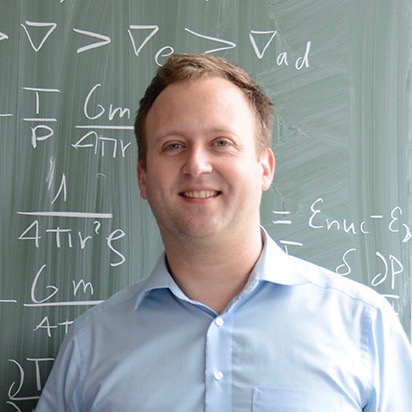Observing planets as they form

By Christoph Mordasini
Astrophysics – the branch of physics that aims at explaining astronomical observations – differs from most other branches of physics by the comparatively minor availability or sometimes even absence of laboratory experiments. While crucial laboratory experiments do exist for several physical systems and processes that are relevant in astrophysics and in particular for the origin and evolution of planetary systems, many other key systems and mechanisms can simply not be studied in the lab. This is obviously the case because the systems are either too large, and – for all extrasolar planetary systems – very far away from us. To get a feeling for the distances, if we scale down one astronomical unit to one meter, the closest star – Proxima Centauri – would come to lie close to the Mediterranean Sea near Genoa as measured from Switzerland. Regions in space like the Orion nebula where planets are currently forming are even further away.

Prof. Christoph Mordasini coordinates PlanetS Research Domain 3. (Photo University of Bern)
The Solar System, of course, is much closer. With all its major and minor bodies it can be studied in great detail by in situ measurements, remote sensing, and laboratory studies, and helps in an enormous way as it is the benchmark case for every theory of planet formation. But it is only one example and we have seen with the discovery of 51 Peg b what can happen when one builds a theory only on one example… But more importantly, when it comes to planet formation, the Solar System shares one big other limitation with most exoplanets:
It is very old. The large majority of extrasolar planets we know are very old, too. Therefore, planet formation theory faces a double separation from the objects it studies: not only in space, but also in time. To do a similar scaling as with the distances above, if one translates the first 10 Myr of the life of a planetary systems – during which most of the formation action happens – to a human lifetime, this roughly corresponds the first month after birth only. This means that from observations of Gigayear-old extrasolar planets one has to extrapolate back in time enormously. In the context of the modern picture of a highly dynamic planet formation process, where building blocks and protoplanets move and interact, systems rearrange, and architectures change – where πάντα ῥεῖ (Panta rhei) as the old Greek would say – this seems to be a difficult, not to say an impossible task.
To really advance our understanding, one would want to have much more direct observational constraints, which means to have astronomical observations of planetary systems while they are forming. And it is exactly the beginning of these observations that we are privileged to witness at the moment, building up steam in the past few months by several spectacular discoveries. This fundamental change of observations of nascent planetary systems even comes in multiple forms: the first is the “kinematic detection”. Observations of Doppler-shifted emission lines in a protoplanetary disk allow to reconstruct the velocity field of the gas. If a protoplanet is present, it locally distorts the Keplerian flow, which can be detected. The second are the “gap planets”. Embedded protoplanes alter the way small dust grains drift through the disk, leading to rings and gaps (this is not the only explanation, though). Third, the “chemical imprint”: protoplanets can alter the disk chemistry in their surroundings, namely by heating the disk so that certain species go locally into the gas phase. Last but not least, there is the spatially resolved direct imaging of protoplanets. In the best case, the protoplanets are observed in several wavelength ranges, revealing emission not only from their photospheres, but also from accretion tracers and the circumplanetary disk.
In future, the combination of high spectral and spatial resolution observations of forming planetary systems by coming instrumentation should allow even more detailed studies, and reveal more objects (after all, the theoretical prediction is that nearly all protoplanetary disks should contain protoplanets!). Observing planets as they form will still remain hard because of the small spatial scales, the confusion with disk features, and the faintness during some phases. Connecting theory and observations to understand these new observations will not be easy, neither. But I nevertheless think that “observing planet formation as it happens” has the potential to open a new chapter. It is therefore important and positive to see that researchers from severals institutes of the NCCR PlanetS are at the forefront of this undertaking, both on the observational and the theoretical side. Because “seeing directly where when which planets form” is simply too promising to not address it!
Categories: Internal Newsletter, News, Uncategorized
